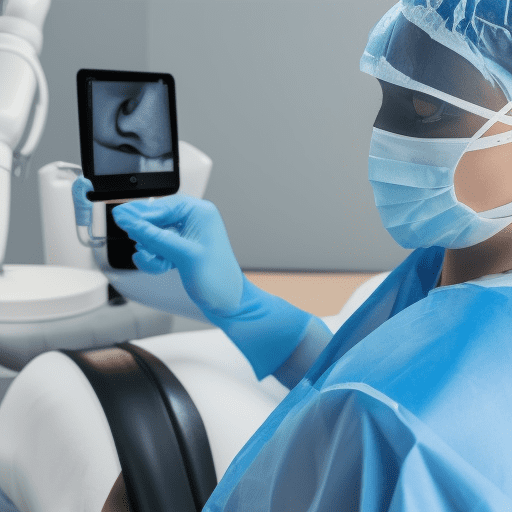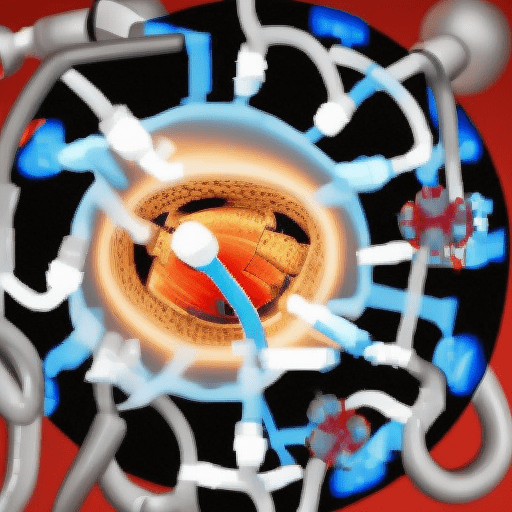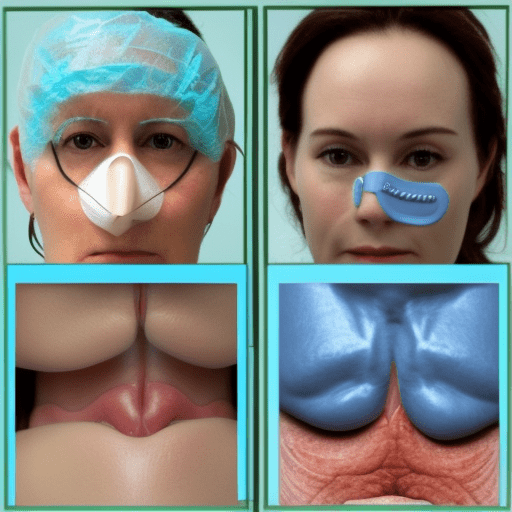There are two main types of medical procedures: invasive vs non invasive.
Invasive procedures involve making a cut into the body, while non-invasive procedures do not.
Each type of procedure has its own benefits and drawbacks. Let’s take a closer look at each one!
Invasive procedures are those that involve making a cut into the body in order to access the organs or tissues being studied or treated.
Non-invasive procedures, on the other hand, do not involve making any cuts into the patient’s body.
What are invasive vs non invasive procedures?

Invasive procedures involve breaking the skin or entering the body in some way, while non-invasive procedures do not.
Explain it to a child
Invasive procedures involve making a cut into the body in order to access the organs or tissues being studied or treated. Non-invasive procedures do not involve making any cuts into the patient’s body.
Common examples of invasive procedures include surgery, biopsies, and injections. Meanwhile, common examples of non-invasive procedures include blood tests, X-rays, and MRIs.
In general, invasive procedures are more riskier and have more potential side effects than non-invasive procedures. However, they are also often more effective at treating serious conditions.
As a result, the decision of whether to undergo an invasive or non-invasive procedure is one that should be made with the guidance of a medical professional.
Advantages of invasive and non invasive procedures
Non-invasive procedures do not break the skin, such as X-rays.

The advantages of invasive procedures include that they are often more effective than non-invasive procedures.
For example, surgery can remove a cancerous tumor while X-rays can only show if there is a tumor present.
In addition, invasive procedures allow for a more targeted approach to treatment.
For example, in surgery, only the affected area is treated while with X-rays, the entire body is exposed to radiation.
The advantages of non-invasive procedures include that they are often less expensive than invasive procedures and have fewer risks and side effects.
For example, X-rays have a very low risk of complications while surgery carries a higher risk.
In addition, non-invasive procedures are often less painful than invasive procedures and have a shorter recovery time.
Example, after X-rays, there is no pain or recovery time while after surgery, there is pain and a period of recovery.
When deciding which type of procedure to undergo, it is important to discuss the risks and benefits with your doctor to make the best decision for your individual case.
Disadvantages of invasive and non invasive procedures
Disadvantages of invasive procedures include the fact that they are more expensive, require more anesthesia, have a greater risk of infection, and may require a longer hospital stay.

Non-invasive procedures are less likely to lead to complications, can be performed on an outpatient basis, and usually cost less.
One disadvantage of non-invasive procedures is that they may not be as effective as their invasive counterparts.
Another is that some non-invasive procedures may require multiple sessions before desired results are achieved.
Patients should discuss the pros and cons of both types of procedures with their doctor before making a decision.
Examples of invasive and non invasive procedures
There are a number of medical procedures that can be classified as either invasive or non-invasive.

Invasive procedures involve making an incision in the body in order to access the area that needs to be treated.
Non-invasive procedures, on the other hand, do not require any form of surgery.
Some examples of invasive procedures include open heart surgery, laparoscopic surgery, and childbirth.
Non-invasive examples include MRI scans, X-rays, and ultrasounds.
While both types of procedures have their own risks and benefits, non-invasive procedures are generally less risky and have shorter recovery times.
As a result, they are often the preferred choice when possible.
When is it appropriate to choose an invasive procedure over a non-invasive one
When it comes to medical procedures, there is often a trade-off between invasiveness and effectiveness.
Invasive procedures are those that involve breaking the skin or entering the body in some way, while non-invasive procedures are generally less intrusive.
Usually, the more invasive a procedure is, the more effective it will be.
However, this is not always the case, and there are times when a less invasive procedure may be the best option.
For example, if a patient is elderly or has other health conditions that make them vulnerable to complications, a less invasive procedure may be preferable.
In addition, some patients may simply prefer to avoid an invasive procedure if possible.
Ultimately, the decision of whether to choose an invasive or non-invasive procedure depends on a variety of factors and should be made on a case-by-case basis.
In general, non-invasive procedures are less risky than invasive ones and have shorter recovery times.
Article Sources
Jacks of Science sources the most authoritative, trustworthy, and highly recognized institutions for our article research. Learn more about our Editorial Teams process and diligence in verifying the accuracy of every article we publish.
